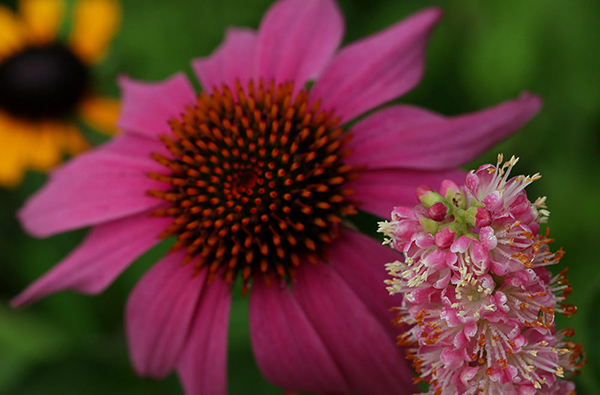Pollinator Garden Articles
go.ncsu.edu/readext?979869
en Español / em Português
El inglés es el idioma de control de esta página. En la medida en que haya algún conflicto entre la traducción al inglés y la traducción, el inglés prevalece.
Al hacer clic en el enlace de traducción se activa un servicio de traducción gratuito para convertir la página al español. Al igual que con cualquier traducción por Internet, la conversión no es sensible al contexto y puede que no traduzca el texto en su significado original. NC State Extension no garantiza la exactitud del texto traducido. Por favor, tenga en cuenta que algunas aplicaciones y/o servicios pueden no funcionar como se espera cuando se traducen.
Português
Inglês é o idioma de controle desta página. Na medida que haja algum conflito entre o texto original em Inglês e a tradução, o Inglês prevalece.
Ao clicar no link de tradução, um serviço gratuito de tradução será ativado para converter a página para o Português. Como em qualquer tradução pela internet, a conversão não é sensivel ao contexto e pode não ocorrer a tradução para o significado orginal. O serviço de Extensão da Carolina do Norte (NC State Extension) não garante a exatidão do texto traduzido. Por favor, observe que algumas funções ou serviços podem não funcionar como esperado após a tradução.
English
English is the controlling language of this page. To the extent there is any conflict between the English text and the translation, English controls.
Clicking on the translation link activates a free translation service to convert the page to Spanish. As with any Internet translation, the conversion is not context-sensitive and may not translate the text to its original meaning. NC State Extension does not guarantee the accuracy of the translated text. Please note that some applications and/or services may not function as expected when translated.
Collapse ▲
Orange coneflower, purple coneflower, and sweet pepperbush. Photo by Debbie Roos.
Pollinator Garden Maintenance:
Spring Chores in the Pollinator Garden
Fall Chores in the Pollinator Garden: Leave the Leaves and Save the Stems
Provide Nesting Habitat for Native Bees Through Plants Stems in Your Garden
Challenging the Conventional Wisdom about Praying Mantids
Other Articles:
Ground-Nesting Bees Should Be Appreciated, Not Feared!
Celebrating 15 Years in Pollinator Paradise!
Chatham County 4-H Youth Participate in the Great Southeast Pollinator Census
Critter Spotlight: Passionflower Bee
Pollinator Plant Spotlight: Late Figwort
Critter Spotlight: Camouflaged Looper
Community Scientists Trained to Participate in Bumble Bee Atlas Project
General Pollinator/Beneficial Insect Articles:
Have You Seen the Largest Butterfly in the U.S.?


